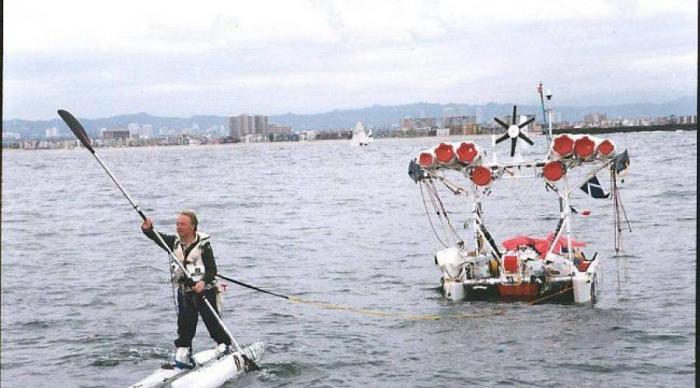Many of us would have heard about Jesus Christ walking on water. There are accounts of it in three different gospels. Christians believe it to be one of the many miracles that Christ performed. Agnostics are not sure about it and others believe it to be a farce! God or not, we have surely never seen a human walk on water. We know some amphibians and insects that can actually either float or walk on water. But are there conditions under which humans, like you and me, might be able to walk on water?

There have been many documented cases of people using different kinds of equipment to walk on water. In the 15th century, Leonardo da Vinci, the famous painter, invented a pair of pontoon-like shoes intended for this purpose, and in 1988, French entertainer Remy Bricka walked across the Atlantic on a pair of floating skis. But is it possible to do the same without using any external equipment? I am sure Jesus did not ski across the seas.

Well, to know that, we have to dwell into the concepts of surface tension and viscosity. Surface tension is the elastic tendency of a liquid. At any liquid-air interface, there is a great attraction between liquid molecules that results in surface tension because of an inward force at its surface that causes the liquid to behave as if its surface were covered with a stretched elastic membrane. Surface tension enables many insects like water spiders to float on water. These insects also have hydrophobic(water repelling) hair on them that keep them dry. But surface tension is too small a force to make larger species walk on water. Viscosity on the other hand, is a fluid’s resistance towards deformation by stress. Lizards like the Common Basilisk can actually walk on water when in danger, for a brief period of time. They do so using their large hind legs with fringes that push the water against them. This enables these reptiles to gain enough momentum to walk on water with most of their bodies outside water. This is pretty similar to the butterfly stroke while swimming when the head is in the air for a brief period of time. The momentum generated by the velocity of a single stroke however, is not enough for our body to stay above water for long. The desired phenomenon is how a stone skips when thrown at a low angle towards a water body with great velocity. In such cases, the viscosity of the liquid becomes important as well. The higher the viscosity of the liquid, the easier it would be to push our bodies against it and walk on it.
What if we do not want to change the liquid? Well then it just boils down to three things. Our weight, surface area of our feet and the speed at which we run. It was estimated in a 2006 paper in the Annual Review of Fluid Dynamics that the average human can walk on water if he can reach a speed of 108 km/h. This is close to the speed at which the fastest animal on earth, the cheetah runs at. The current human record set by Usain Bolt is 37.8 km/h. Although scientists believe that humans can in future reach speeds of 60 km/h, it is still not sufficient to run on water. Only alternative is probably a kid that weighs less or a midget of the same weight running at speeds faster than Usain Bolt. In a nutshell, Jesus walking on water surely seems a miracle till a Super Flashboy comes along and starts strutting on water.